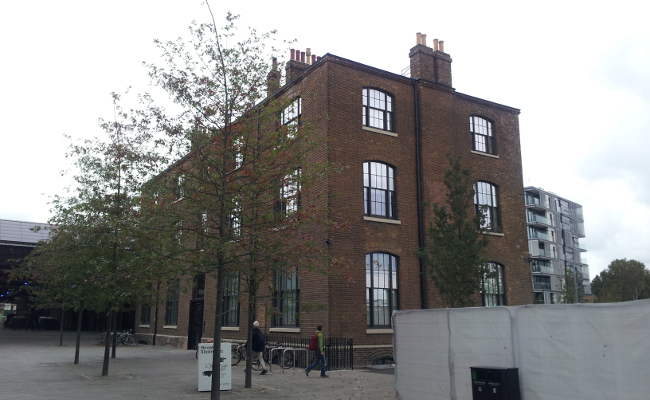If you thought children playing soldiers was sinister enough, it is impossible not to be struck by the darkness of a cartoon in which several kids mimic a gas attack, currently on show at the House of Illustration in London.
That this image comes from the pen of Ernest Howard (EH) Shepard, the illustrator behind the Winnie the Pooh and The Wind in the Willows drawings, makes it all the more surprising, especially given that his work throughout the First World War is described as “gentle” in the House’s exhibition.
Born in 1879, Shepard showed an early aptitude for drawing, with many of his early sketches focusing on soldiers.
He later volunteered for the First World War before conscription was introduced, and sent a number of war-based cartoons back to the offices of Punch in London, one of which was the gas attack image published in the satirical magazine on the 11th October 1916.
The others, to be fair to the museum, tended to be more mild. As a plaque in the museum reads, the cartoons “did not reflect his experience of the Battle [of the Somme], which was little reported despite it’s significance.”
Even aside from the everyday horror of the war, Shepard was personally affected by it, his brother Cyril being killed at the Somme, and buried not far away at a place that Shepard marked on a map he carried with him for the rest of the campaign.
But it is this contrast between the horror of the war and the general tone of Shepard’s humour that is most striking throughout the exhibition.
Most of the cartoons that concern war involve light-hearted jokes. One piece sees an officer inspecting a unit, commenting on a particular medal on one squaddie’s chest:
“Don’t seem to remember the colours,” the officer says. “Which campaign is that?”
“First prize ploughin’ match at Yeovil, zur?” the soldier replies.
Despite the personal tragedy inflicted on him, Shepard had a good war, joining as a lieutenant and leaving as a major after serving an extended tour in Italy throughout 1919.
His skill with drawing proved useful to the British artillery units, who used his sketches to better target the Germans.
Following the war Shepard went on to join the editorial dinners at Punch in 1921, the proper start to a 33-year career at the magazine, drawing social satire during the 20s and moving on to political satire in the 30s and 40s.
Ian Hislop, the editor of Private Eye, in many ways Punch’s spiritual successor, notes in an exhibition video clip that throughout the war Shepard went from drawing derivative cartoons to developing his own more realistic style, informed by his war paintings also on show at the museum.
Whether you are a fan of Pooh or Punch, the House of Illustration’s exhibition is an interesting examination of an artist finding himself in the midst of tragedy.
Examples of the cartoons can be found on the House of Illustration’s website.
Image Credit – House of Illustration, October 2015 by Jimmy Nicholls
